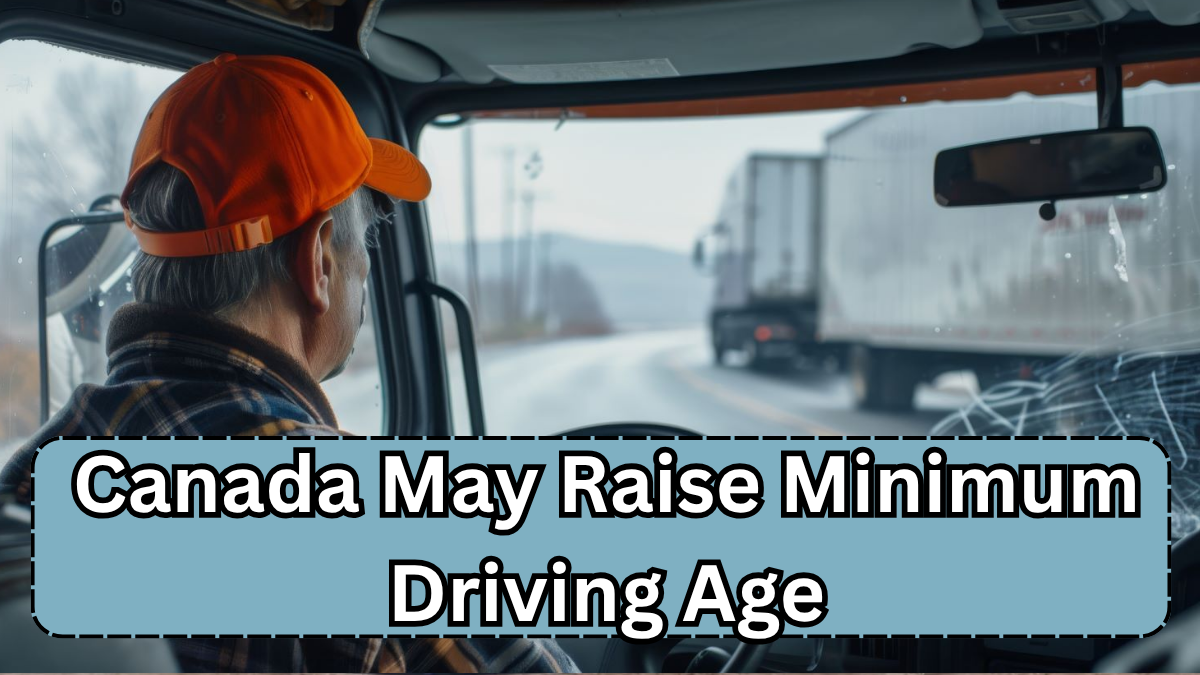Canada is once again at the crossroads of a significant road safety decision. The government has put forward a Canada teen driving age proposal that could see the minimum legal driving age increased in several provinces. This move is sparking conversations across communities, parents, and young drivers themselves. The heart of the debate lies in balancing safety with independence and freedom for teens.

Table of Contents
What Is the Canada Teen Driving Age Proposal?

The proposal aims to raise the minimum driving age from 16 to 17 or 18 in some areas, depending on the province. This comes as part of a broader effort to reduce accidents involving young drivers, who statistically are at a higher risk on the road.
-
Rationale: Data shows that drivers under 18 are more prone to accidents due to inexperience.
-
Goal: Improve road safety and reduce fatal crashes involving teens.
-
Scope: Could affect provinces that currently allow driving at 16, with potential nationwide adoption.
How the Graduated License System Fits In
Alongside the age increase, officials are considering adjustments to the graduated license system—a step-by-step process that introduces driving privileges gradually to young drivers.
| Stage | Description | Restrictions |
|---|---|---|
| Learner’s Permit | Supervised driving only | No nighttime driving, no passengers |
| Intermediate | Limited unsupervised driving with restrictions | Limits on night driving, passenger count |
| Full License | No restrictions | Full driving privileges |
This system is designed to protect underage drivers by ensuring they gain experience safely before obtaining full driving rights.
What Does the Underage Driver Law Change Mean?
The underage driver law changes proposed will tighten rules, making it harder for teens to get unrestricted licenses quickly.
-
Stricter penalties for violations
-
Longer learner periods
-
Enhanced driver education requirements
This aims to instill better driving habits early on.
Public Reaction: Pros and Cons
The Canada teen driving age proposal is stirring passionate debate among Canadians.
Pros:
-
Safer roads with fewer teen-related accidents
-
More time for driver training and maturity
-
Potential to reduce insurance costs for families
Cons:
-
Restricts teen independence and mobility
-
Potential inconvenience for families relying on teen drivers
-
Economic impact on businesses employing young drivers
What’s Next?
The proposal is currently under review with consultations planned across provinces. The government encourages public input before finalizing any changes to the driving laws.
Summary Table: Key Points of the Proposal
| Aspect | Current Status | Proposed Change |
|---|---|---|
| Minimum Driving Age | 16 in many provinces | Raised to 17 or 18 |
| Graduated License | 3-stage licensing in place | Possible stricter rules |
| Underage Driver Law | Existing penalties and rules | Tougher penalties & education |
| Public Opinion | Mixed feelings | Ongoing debate |
FAQs
Q1: Why is the minimum driving age being considered for increase?
A: To reduce teen driver accidents and improve overall road safety by ensuring drivers have more maturity and experience.
Q2: How will this affect current teen drivers?
A: Teens already holding licenses will not be affected retroactively, but new applicants will follow the new age and licensing rules once implemented.
Q3: What is a graduated license system?
A: It’s a staged licensing process that gradually introduces driving privileges to young drivers, with restrictions to enhance safety.
Q4: Will insurance premiums for teen drivers be affected?
A: Potentially yes, as safer driving practices and age limits can influence lower insurance costs for young drivers and their families.
Raising the minimum driving age in Canada is more than just a legal change—it’s a societal shift towards prioritizing safety while still navigating the challenges of youth independence. Stay tuned as this proposal unfolds!
Click here to learn more







